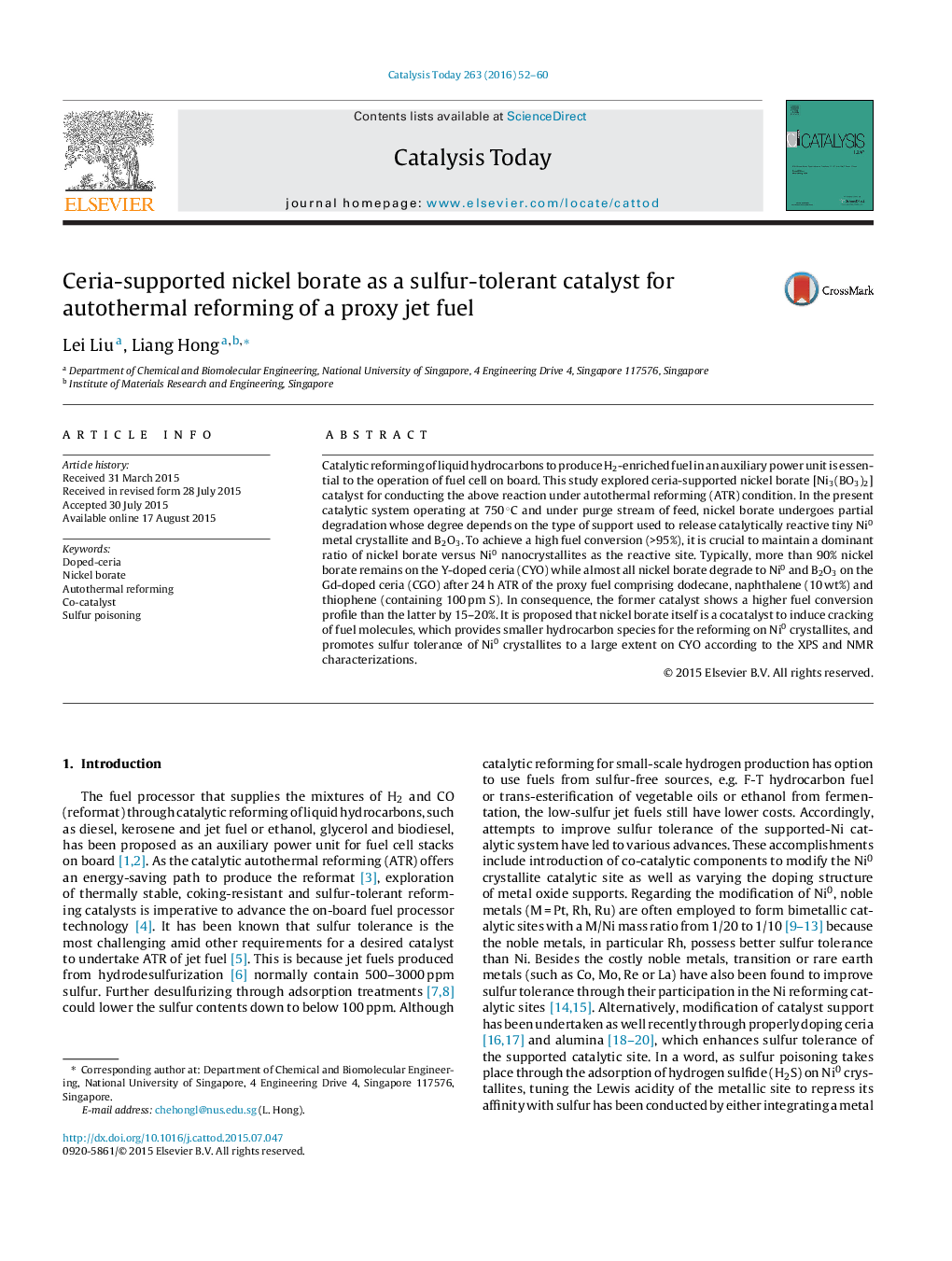| Article ID | Journal | Published Year | Pages | File Type |
|---|---|---|---|---|
| 53402 | Catalysis Today | 2016 | 9 Pages |
•Ceria-supported nickel borate catalyzes autothermal reforming of a proxy fuel.•Nickel borate, as co-catalyst, enhances sulfur tolerance of the Ni catalytic site.•Doping composition of ceria significantly affects stability of nickel borate.
Catalytic reforming of liquid hydrocarbons to produce H2-enriched fuel in an auxiliary power unit is essential to the operation of fuel cell on board. This study explored ceria-supported nickel borate [Ni3(BO3)2] catalyst for conducting the above reaction under autothermal reforming (ATR) condition. In the present catalytic system operating at 750 °C and under purge stream of feed, nickel borate undergoes partial degradation whose degree depends on the type of support used to release catalytically reactive tiny Ni0 metal crystallite and B2O3. To achieve a high fuel conversion (>95%), it is crucial to maintain a dominant ratio of nickel borate versus Ni0 nanocrystallites as the reactive site. Typically, more than 90% nickel borate remains on the Y-doped ceria (CYO) while almost all nickel borate degrade to Ni0 and B2O3 on the Gd-doped ceria (CGO) after 24 h ATR of the proxy fuel comprising dodecane, naphthalene (10 wt%) and thiophene (containing 100 pm S). In consequence, the former catalyst shows a higher fuel conversion profile than the latter by 15–20%. It is proposed that nickel borate itself is a cocatalyst to induce cracking of fuel molecules, which provides smaller hydrocarbon species for the reforming on Ni0 crystallites, and promotes sulfur tolerance of Ni0 crystallites to a large extent on CYO according to the XPS and NMR characterizations.
Graphical abstractFigure optionsDownload full-size imageDownload high-quality image (96 K)Download as PowerPoint slide
